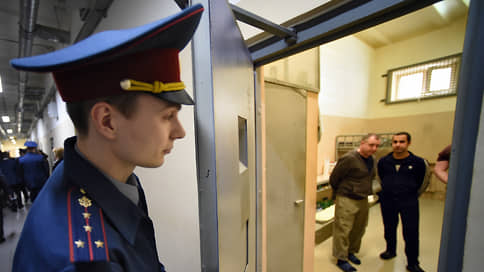The convicts were doubled the footage – Kommersant
[ad_1]

The Constitutional Court (CC) declared it unacceptable to provide convicts in a pre-trial detention center with a smaller area than it is supposed to be for the accused and suspects in the same place. This is stated in the court decision published on Wednesday. The reason for checking the relevant norm of the Criminal Executive Code (PEC) was Maxim Piskarev’s complaint about the inequality between inmates: if the suspect and the accused are guaranteed at least 4 square meters by law. m, then the convicts who ended up in the pre-trial detention center – half as much. For cases where the “living space” does not reach the general standard, it is possible to introduce a preferential offset for the time spent in the pre-trial detention center, the Constitutional Court pointed out.
The convicts must be kept in a pre-trial detention center on the same conditions as those under investigation and arrest, the new decision of the Constitutional Court says. The court made such a conclusion following the consideration of the complaint of Maxim Piskarev, who asked to check the constitutionality of Part 3 of Art. 77.1 PEC.
Mr. Piskarev was sentenced to five years in prison to be served in a strict regime penal colony in Surgut. He was supposed to be released in April 2018, but in the summer of 2017, in connection with the investigation of a new criminal case, he was transferred to SIZO-1 in the Arkhangelsk Region. And in 2020, Maxim Piskarev filed a lawsuit against the Federal Penitentiary Service to recover compensation for inadequate conditions of detention in SIZO-1 in the Arkhangelsk Region. He complained about the violation of the sanitary norms of the square when he was kept in the general cells of the isolation ward. According to the law on the detention of accused and suspected persons, each occupant of a cell must have at least 4 sq. m of space, but the applicant spent eight months in a 40 sq. m, where at different times from 9 to 20 people were kept. The court concluded that the plaintiff was transferred to a pre-trial detention center as a convict held in a pre-trial detention center on the conditions of serving a sentence in a correctional institution, and there he is entitled to 2 square meters. m. The higher courts also agreed with this decision, since the legislation provides for different norms of “living space” for those sitting in a pre-trial detention center and in a correctional colony.
However, the CC heard the arguments of the applicant, who in his complaint emphasized that even being in a pre-trial detention center with an area of less than 3 sq. m Russian courts equated to torture. It turns out that the controversial norm allows, in fact, on legal grounds, to subject convicts to torture and inhuman treatment, Maxim Piskarev was indignant. The CC agreed with him. Those sentenced to deprivation of liberty with serving a sentence in a correctional colony, left in a pre-trial detention center or transferred there, must be placed in the same conditions as suspects and accused persons detained in custody, the court decision says. At the same time, the Constitutional Court came to the conclusion that the norm challenged by Mr. Piskarev does not contradict the Constitution – it’s just that in such cases the minimum area should be determined not according to the rules established for colonies, but according to the law on the detention of accused and suspects. The legislator may provide for higher space standards in the SIZO cell for cases similar to the applicant’s case. If this is impossible to do, then a preferential offset should be introduced for the time spent in a pre-trial detention center for convicts in a term of imprisonment, the Constitutional Court believes. Also, the applicant has the right to demand compensation for harm associated with a violation of the conditions of his detention, the decision notes.
The Constitutional Court came to a completely logical conclusion that it is necessary to proceed from the conditions of detention, says lawyer Dmitry Agranovsky: two meters in a colony, which is still an open space for movement, rather indicate the boundaries of personal space. At the same time, 4 sq. m in a pre-trial detention center is physically four meters, and if the area is even smaller, then this can rightfully be considered torture conditions, the expert states. However, it will be quite problematic to establish recount criteria in such a situation (now, according to Article 72 of the Criminal Code, one day in a pre-trial detention center is equivalent to one day in a strict and special regime colony), the lawyer warns: rather, we can talk about compensation for violating the conditions of detention of the convict, he argues.
[ad_2]
Source link








